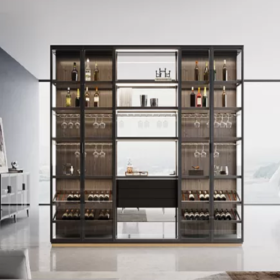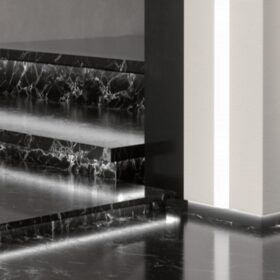Comparing Materials- Metal vs. Wood vs. Plastic in Horizontal Handles
In the realm of horizontal handle design, the choice of material is a pivotal decision that can significantly impact the aesthetic appeal, durability, and functionality of the product. Three prevalent options for horizontal handles are metal, wood, and plastic, each with its unique advantages and drawbacks. This article will delve into a comprehensive comparison of these materials to guide informed decision-making for designers and manufacturers.
Strength and Durability
Metal handles, particularly those made of stainless steel or aluminum, offer exceptional strength and durability. They are highly resistant to bending, corrosion, and wear, making them a suitable choice for heavy-duty applications. Wood handles, on the other hand, exhibit good strength-to-weight ratios, but their durability is susceptible to factors such as moisture, pest infestation, and UV exposure. Plastic handles are typically the least durable of the three options, as they can be prone to cracking, breaking, and fading over time.
Aesthetics and Design
Metal handles convey a modern and sleek aesthetic, complementing a wide range of interior design styles. They can be finished in various colors and textures, allowing for customization to suit specific design preferences. Wood handles provide a natural and warm appearance, adding a touch of organic elegance to any space. Their natural grain patterns and textures create a sense of warmth and sophistication. Plastic handles offer a wide array of colors and finishes, providing endless possibilities for design creativity. They can be molded into intricate shapes, enabling designers to explore unique and contemporary aesthetics.
Functionality and Ergonomics
In terms of functionality, metal handles excel in providing a secure grip, especially when used in damp or wet environments. Their smooth, non-porous surfaces prevent moisture and bacteria accumulation. Wood handles offer a comfortable grip, but their surface texture can sometimes be rough, which may not be ideal for all users. Plastic handles provide a variety of grip options, ranging from textured surfaces to soft-touch finishes, ensuring comfort and ease of use.
Cost and Maintenance
Metal handles are generally more expensive than wood or plastic handles. However, their durability and ease of maintenance make them a cost-effective investment over the long term. Wood handles require regular sealing and occasional refinishing to maintain their appearance and longevity. Plastic handles are the most affordable option and require minimal maintenance.
Sustainability
Sustainability is an increasingly important consideration in material selection. Metal handles are typically made from recycled materials and can be recycled at the end of their lifespan. Wood handles are a natural and renewable resource, but their sustainability depends on the sourcing and harvesting practices. Plastic handles, on the other hand, often end up in landfills and contribute to environmental pollution.
The choice between metal, wood, and plastic for horizontal handles should be based on a careful consideration of the specific requirements of the application. Metal handles offer unparalleled strength and durability, while wood handles provide a natural and elegant touch. Plastic handles offer a wide range of design options and affordability. By understanding the unique characteristics of each material, designers and manufacturers can make informed decisions that optimize the aesthetic appeal, functionality, and long-term value of their horizontal handle designs.
-
2024-11-29Top Trends in Modern Kitchen Cabinet Pulls for 2024
-
2024-11-28The Ultimate Guide to Modern Kitchen Cabinet Pulls- Materials, Styles, and Tips
-
2024-11-27Elevate Your Kitchen Design with These Must-Have Modern Cabinet Pulls
-
2024-11-26Sleek and Stylish- The Best Modern Kitchen Cabinet Pulls for a Contemporary Look










